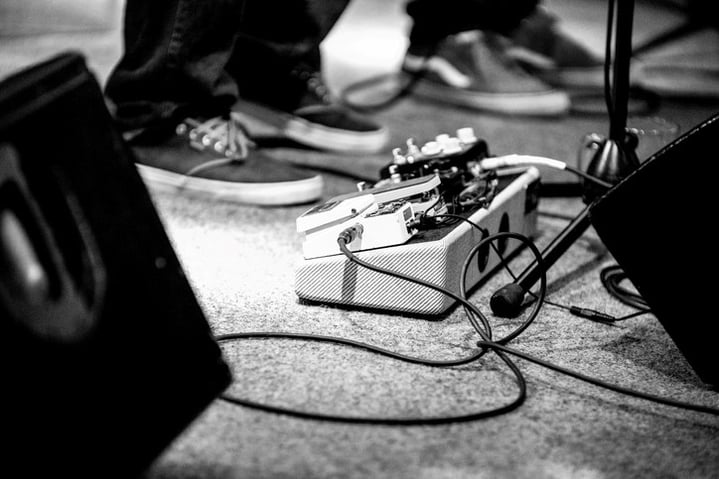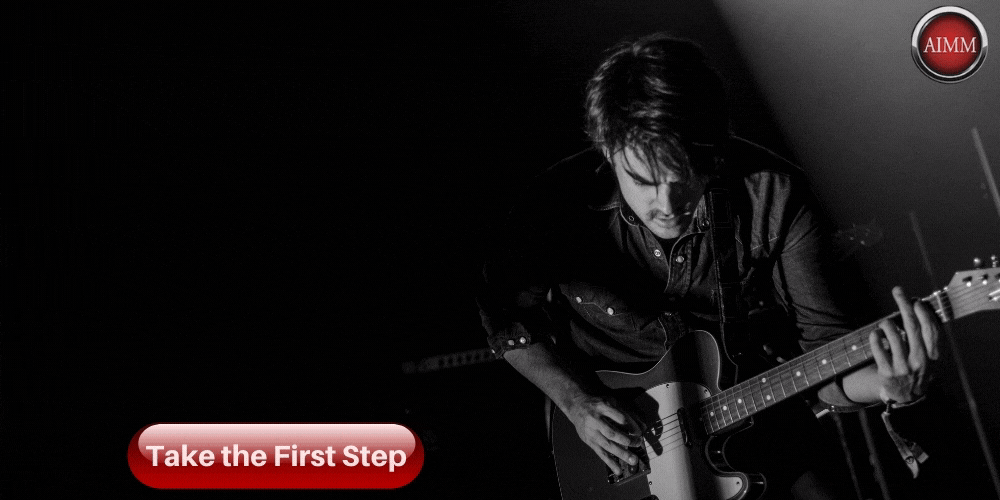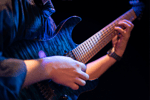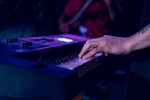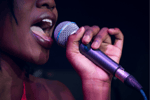Top 15 Essential Guitar Pedals | Beginners Guitar Pedal Guide
While some musicians cry out in defeat that we are living in a trying time with so much exposure, the difficulty in being noticed, and so much music that has "already been done," it's important to look at the bright side.
We do have so many opportunities to be found. How is that a bad thing?
Competition is not bad either. Iron sharpens iron.
And most importantly of all, there is one thing we have now that many decades in the past did not have.
Technology.
Which other generation could share their music with thousands or millions of listeners just moments after creating it? What other decades of musicians could attend an online music school...from the comfort of their own home?
You can create clean, expensive-sounding mixes and recordings right from the comfort of your own living room.
We are living in an amazing music age.
It simply existing is not enough, however. We must take full control of this technology and use it as our alley. Learning and optimizing the available technology is now key to success.
One piece of technology that has still been around for quite some time is the guitar pedal.
Whether it's decking out your home studio or kicking it into high gear on the road, guitar pedals can be a creative musician's best friend.
There are many different varieties and differences between them, so let's jump right into the discussion.
Table Of Contents
- The Beginning of the Pedal Chain
- Pitch Shifting FX Pedals
- Dynamic/Gain FX Pedals
- Modulation FX Pedals
- Time FX Pedals
- Other Guitar Pedals
- Learn How To Utilize Your Arsenal
Top Guitar Pedals You Should Consider Adding to Your Collection
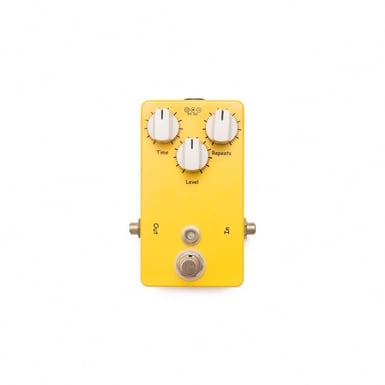
It's important to consider how you arrange your rig/pedal board. Believe it or not, the way you order your Pedals is critical.
The following are grouped in the order that you should arrange them on your pedal board.
The beginning of the Pedal Chain
1. Tuner
This one is handy and simple to understand. The tuner pedal is great whether you are playing in your bedroom or live on stage.
All you have to do is hit the pedal, and you will be able to accurately and silently tune your guitar. Simple, effective, and awesome. It will also mute your guitar in case you have to change instruments mid-set.
2. Acoustic
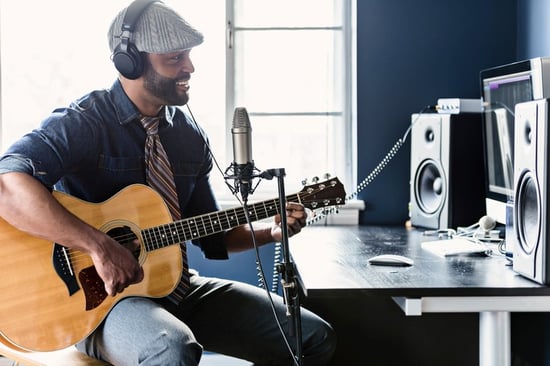
Want to have an acoustic quality without switching your guitar? Or maybe you don't own an acoustic guitar? Alternatively, perhaps there is one particular verse or bridge of a song that you want to sound more acoustic than the rest.
Never fear, the acoustic pedal is here. When using this pedal, it will transform your electric guitar into a thick, resonating acoustic guitar.
3. Volume
This one is a little self-explanatory, yeah? But hey, you're not always feeling like playing with the knobs on your guitar or the switches on your amp. We get it.
The big key here is depending on where you set up the volume pedal in your rig.
For instance, if you set it up early in your rig, it will change the volume like the knob on your guitar, but if it's later on in the chain of pedals, it will reduce volume without diminishing your tone or gain.
4. Wah-Wah
Chances are, you've heard of this fun pedal.
With the wah-wah pedal, you can accent various frequencies and pitches depending on how you press down on the pedal (toe - higher frequencies, heel - bass frequencies).
This pedal is incredibly useful during solos, fun to play around with, and a must-have if you love funk music.
Important note: Both the Volume and Wah-Wah pedals can be placed at either the beginning or end of your pedal chain.
Pitch Shifting FX Pedals
5. Octave
The octave pedal is great for creating some unique, full sounds. So what is an octave you may be asking?
An octave is the same note just played at a higher or lower pitch. Like if you play (or sing) a high C, a low C is the same exact note, just a different pitch.
The way the octave pedal works is when you play a note it will fill your sound it with a higher or lower octave. This thick sound is fun to play around with and can help make some cool effects.
Dynamic/Gain FX Pedals
6. Compressor
A compressor pedal does exactly as its name suggests, it compresses.
What this means is that it normalizes the tone and dynamic range and gives it an even-keel, professional sound. So if during your strumming you hit one string very hard and the next one softer, they should sound the same.
Compressor pedals can also help sustain notes for longer durations.
7. Boost
The boost pedal is a very basic addition to any guitar player's collection. Basically, all this pedal does is "boost" your signal and the output strength before it even reaches your amp's preamp.
You don't require as much additional gain to still get that distorted tone with a boost pedal. If you're looking for higher volume with extra gain, the boost pedal is a perfect option for you.
Important note: Boost Pedal can also be placed at the end of your chain if need be.
8. Overdrive
A little more natural than some of your other distortion pedals, Overdrive pedals push your preamp to its limits and can offer significant gain while still keeping your sound's texture and color solid.
Overdrive can give your guitar the wailing sound of high preamp volume levels while still keeping everything intact. The actual spectrum of overdrive tones is pretty vast, and because of this, it is an essential guitar pedal to own and gives a lot of creative power to the musician.
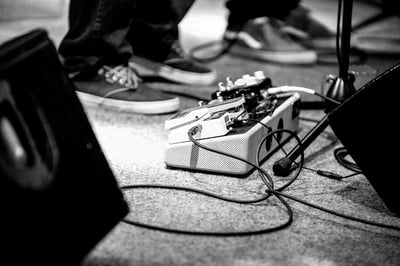
9. Distortion
While there are still many varieties, distortion pedals all have one common goal, and that is to push your guitar's sound to the heavy and extreme. Distortion produces a "hard-clipping," which has a great effect on the soundwave.
The harder the clipping, the more distorted the sound is going to be. This adds a great crunch to the sound. With the gain turned down on a distortion pedal, it tends to have a less condensed and smooth sound than overdrive pedals.
For you guitarists out there wanting to play hard rock or metal, a distortion pedal is definitely something you want to be hooked up in your rig.
10. Fuzz
When you think of insane distortion effects, go one step further, and that is the fuzz pedal.
Fuzz pedals chuck your original guitar tone out the window and replace it with heavy bass and push your amp to its breaking point.
Fuzz pedals have two main type of transistors, which include germanium and silicon. The germanium is the old style and tends to be very reactive, but a little less reliable. Silicon, on the other hand, is a little cheaper and stable, yet doesn't hit the clean tones as well.
If you're looking at the highest saturation/distortion provided, from least to greatest it would go: Overdrive, Distortion, and then Fuzz. Want more information regarding the difference between the three? Click here.
Modulation FX Pedals

11. Chorus
The chorus guitar pedal gives the sensation that there are multiple guitarists playing the exact same thing as you are. You can program it, so it sounds like there are many other players just a little off but playing the same part as you, or you can make it seem like there is a complete duplicate of yourself playing at the exact time.
This provides an incredibly thick sound to whatever riff or rhythm you are playing.
12. Flanger
Imagine a jet plane "wooshing" by or the stretch sound of an old movie's audio or cassette player. This is similar to the effect you receive with the flanger pedal.
The flanger is often compared to the chorus pedal, as it is very similar and adds depth and thickness to your current sound. The key difference is in the amplitude and ratio. The chorus pedal uses a longer/more consistent delay than the flanger, therefore it is a little less subtle.
13. Phase Shifter/Phaser
Along with the similar sweeping sound of the flanger and chorus pedals, the phaser hits peaks and lows depending on your manipulation of the pedal.
It is similar to the chorus in that it adds an effect to the tone as if there were multiple guitarists playing with you, but not quite as many, if you could imagine, as the chorus pedal provides. Some say the phaser effect offers a likeness to a jet plane taking off.
Need more assistance in separating the Chorus, Flanger, and Phaser pedals? No worries, click here for more information.
Time FX Pedals
14. Reverb
Many guitar amplifiers come with reverb settings nowadays, but that doesn't mean the quality is that good. Besides, there are gain and volume settings as well, but that won't stop people from purchasing volume and distortion pedals.
Essentially, reverb pedals offer echo effects that can range from a tiny, subtle echo to sounding like you're in yodeling from the mountaintops. It has a unique ability that is fun to mess around with and plays nicely with solid, clean tones.
15. Looper
Looper pedals have been gaining popularity within the last decade or so.
The way looper pedals work is you play a rhythm or riff once time and your pedal will record it and play it back for you. This is fantastic when you are playing solo, and there are two guitar parts. Seamlessly playing rhythm and lead guitar simultaneously is a really amazing feeling and the looper allows you to do just that.
To properly utilize, hit the pedal, play the part you want "looped," then hit the pedal again. It will play over and over until you hit the pedal a third time and cancel it.

Other Guitar Pedals
There are many other pedals you can add to your personal collection (EQ, delay, tremolo, harmonizer), but these are the ones we consider essential. Think we forgot a super important pedal? Did we leave your favorite one out?
Let us know in the comments below!
![]()
What Pedals Should Every Guitarist Have?
The truth is, there is no "must follow formula." Every musician is different, so you have to find out what works for you.
Half the fun is collecting, personalizing, and acquiring your rig. Let's face it, musicians are incredibly creative people and getting to pick and choose variations is a blast.
However, until you know how to use it properly, it's merely an accessory. You must develop patience and good habits.
Now that you have gathered a satisfactory rig at your home let the Atlanta Institute of Music and Media's Guitar Program bring it to life.
Learn from the industry-leading instructors and receive one-on-one, hands-on training from the comfort of your own personal practice space/studio. You'll master the guitar, increase your guitar playing speed, and perfect your technique.
For more information, click the link below to read a little more about AIMM's Guitar Program.
